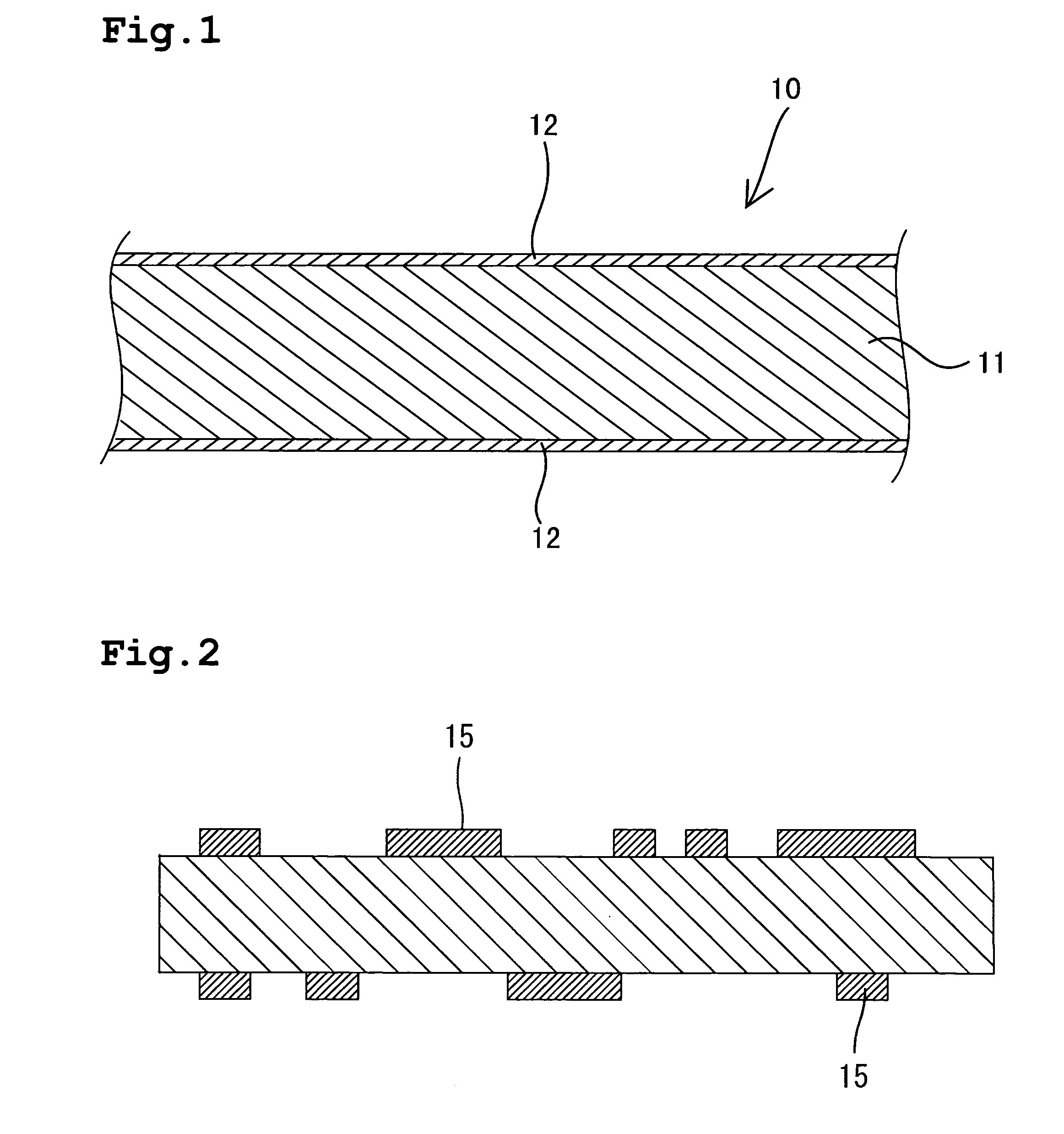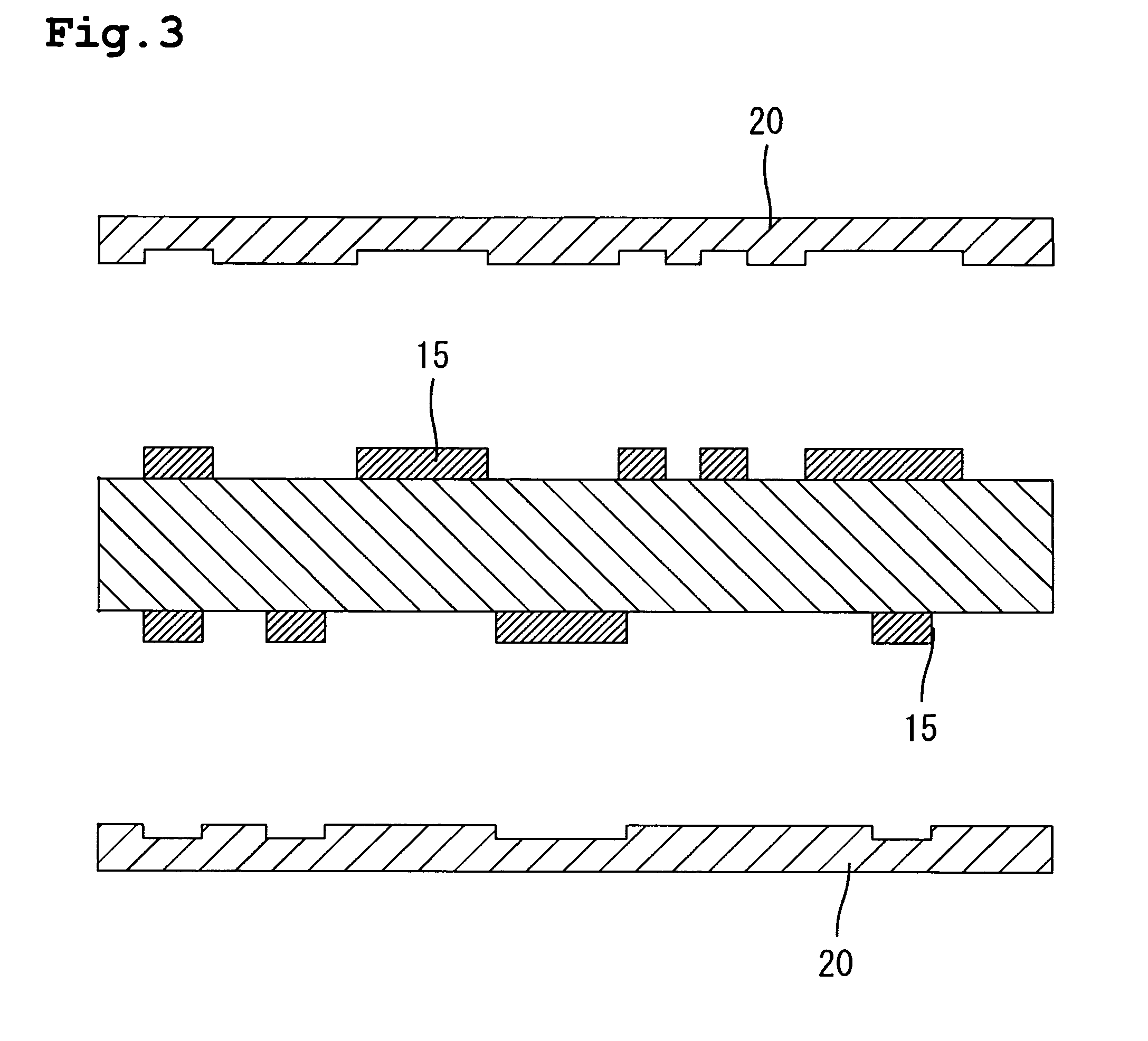Method for manufacturing printed wiring board
a printing method and wiring board technology, applied in the direction of printed circuit parts, non-metallic protective coating applications, chemistry apparatus and processes, etc., can solve the problems of difficult force into spaces, voids to be produced in subsequent processing, and uneven and adequate resin layer formation, etc., to facilitate the thin spreading of resin layer and facilitate polishing
- Summary
- Abstract
- Description
- Claims
- Application Information
AI Technical Summary
Benefits of technology
Problems solved by technology
Method used
Image
Examples
Embodiment Construction
[0029] In the present embodiment, as shown in FIG. 1, a copper clad laminated board 10 with copper foils 12 adhered to both sides of a glass epoxy substrate 11 having a thickness of, for example, 100 μm to 3000 μm is used as a base material. Circuit patterns 15 are formed on the copper clad laminated board 10 by a known photo etching method (see FIG. 2).
[0030] As shown in FIGS. 3 and 4, resin layers 16 (FIG. 4) are formed on the surfaces of the substrate by laminating resin sheets 20 with a thickness of about 30 μm onto the circuit patterns 15 of the wiring board. The resin sheets 20 may be formed of e.g., semi-cured thermosetting epoxy resin. Thermosetting epoxy resin having resin patterns complementary to the circuit patterns 15 are formed beforehand on the surface of the resin sheets 20 facing the circuit patterns 15.
[0031] As shown in FIG. 4, nickel foils 17, with a thickness of 18 μm and one face of which is roughened by a needle shaped plating, are placed on the resin layers...
PUM
| Property | Measurement | Unit |
|---|---|---|
| thickness | aaaaa | aaaaa |
| thickness | aaaaa | aaaaa |
| thickness | aaaaa | aaaaa |
Abstract
Description
Claims
Application Information
 Login to View More
Login to View More - R&D
- Intellectual Property
- Life Sciences
- Materials
- Tech Scout
- Unparalleled Data Quality
- Higher Quality Content
- 60% Fewer Hallucinations
Browse by: Latest US Patents, China's latest patents, Technical Efficacy Thesaurus, Application Domain, Technology Topic, Popular Technical Reports.
© 2025 PatSnap. All rights reserved.Legal|Privacy policy|Modern Slavery Act Transparency Statement|Sitemap|About US| Contact US: help@patsnap.com



